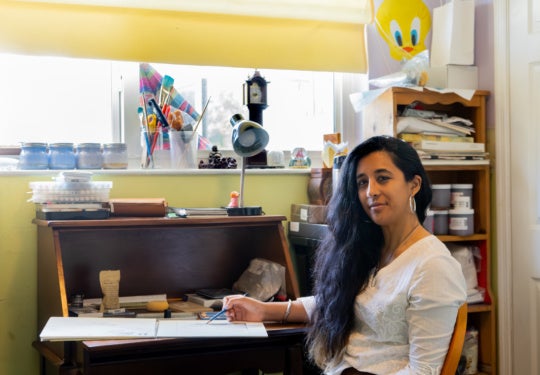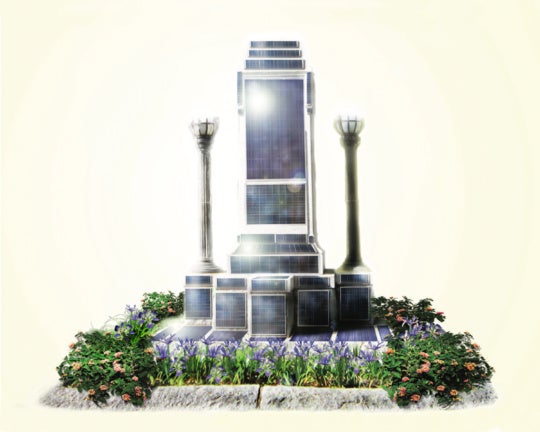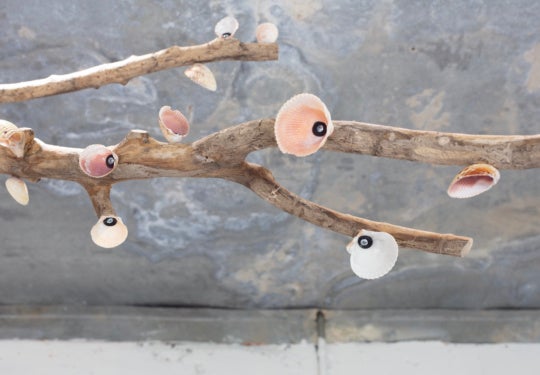
Bill and Vicky Stewart are the owners of Vamp and Tramp Booksellers, one of the largest and most respected vendors of artists’ books and fine press books in the United States. Vamp and Tramp is based in Birmingham, Alabama. Kate Doubler spoke with the couple when they made a stop in Atlanta during their yearly trip to sell artists’ books to libraries and museums across the country. They discussed how they established themselves as booksellers, as well as some of the books that inspire their work.
Kate Doubler: Tell me about how Vamp and Tramp got its start.
Bill Stewart: We started in 1995. I was a lapsed English teacher, and Vicky was a vice president who was getting tired of the corporate world. We had talked for a long time about opening a bookstore, so that was the original idea. We went to the American Booksellers Association weeklong course on how to open your own bookstore. This was in the early 1990s, and they said that Borders and Barnes & Noble were running independent bookstores out of business. That was a wake-up call for us. But then Vicky gave me a copy of John Dunning’s Booked to Die, which is a mystery novel about a bookseller who sells modern first editions, and I said, “People actually make a living doing this?” So when we started Vamp and Tramp, we were trying to sell 20th-century first editions. We didn’t even know that artists’ books existed.

Three years later, I was at a book fair in San Francisco and I stumbled upon the artist’s book Antony and Cleopatra from Ron King’s Circle Press. When I saw this book, I thought, “Wow, how much more exciting is this than another overpriced first edition of Catcher in the Rye,” which was what I actually looking for at the time. So I bought that, and that purchase was the first step. A few months later, I was in London to attend a series of book fairs and decided to look up Ron King. We met, I bought more of his books, and he told me about John Randle and Whittington Press in Gloucestershire. That press is hugely prolific and influential when it comes to producing fine press books. So I met John, and he told me to meet Simon Lawrence of Fleece Press. Hopping around England and meeting these printers was how we got introduced to artists’ books and fine press books.
Our theory was that, in order to sell artists’ books, we needed to put them in the hands of people so that they could turn the pages and have the experience of looking at them. We’ve developed a route, and we travel from mid-January to Thanksgiving.
KD: What kinds of book artists are exciting you right now?
BS: We represent books from the Women’s Studio Workshop, and they just sent us some amazing work.
Vicky Stewart: We are really captivated by books in which each element of the making of the book goes into its message. We’re very interested in books that focus on social justice issues. We’ve had a number of books in the past two years that address civil rights and environmental concerns. We have this one book by Jessica Peterson from Short Twig Press that looks at the desegregation of schools in Prince Edward County in Virginia.
BS: Yes, the story behind this book goes like this: in the late 1950s, the school board of this county ran out of legal ways to prevent integration of the schools. So they closed the schools, and they kept them closed for four and a half years. Last year was the 50th anniversary of the reopening of the schools, and Longwood University decided that the story needed to be told, that not enough people knew that this had happened. They hired Jessica Peterson to shepherd this book, titled Unbound. She got some of the people who had been denied education during this timeframe to tell their stories. It’s an incredible book.

KD: What about books focused on environmental concerns?
VS: Kathy T. Hettinga, who is an artist from Pennsylvania, did a residency at the Women’s Studio Workshop. There, she produced 4 3 2 CRY, which is about fracking.
BS: Yes, her first homestead was in Northern Colorado. Then Kathy took a trip back after moving away, and she saw how that area of the state had become a site for fracking. She kept seeing all these colored signs in blue, red, and yellow with numbers on them, and she learned that those signs denoted the kinds of poisons that were leaking into the ground. It was a bittersweet homecoming for her, and out of that experience she made this book.
I also like books that just tell odd stories or little bits of history that have been overlooked. We have a book by Melissa Wagner-Lawler called In the Event of a Moon Disaster. The text of the book comes from Nixon’s speech writer, William Safire, and it was to be read if the Apollo 11 mission failed. She’s made it into an accordion book. This is a book that just wouldn’t have gotten made if it wasn’t for this one person coming up with the idea and then having the skills to make an artist’s book.

KD: Most of your sales are made to rare books libraries at colleges and universities. Do you know how these books are used in college classrooms?
BS: We’re really encouraged by stories about how students really relate to artists’ books. Our theory is that, because the books are so different from the virtual world they spend so much of their lives in, this hands-on, tangible experience is really exciting to them.
VS: Libraries have also said that the books get shown at times when alumni and guests are visiting the libraries. A librarian at Scripps College had an alumni group come through the rare books section, so she pulled a variety of artists’ books for them. One of the books was by a printmaker in Minnesota, Fred Hagstrom and entitled Deeply Honored. The book is about the Japanese internment camps during World War II.

As it happened, one of the ladies in the group had lived in the internment camps as a child, and she began telling her story at the event. That’s what we see these books do all the time: they stimulate conversation and build relationships between people. They’re such a great way to convey stories that will touch people in ways that a conventional book cannot.
Kate Doubler holds a doctorate in English Literature from Emory University. She is the founding curator of The Artists’ Books Showcase has written extensively on book arts, and dabbles in letterpress and relief printing.




